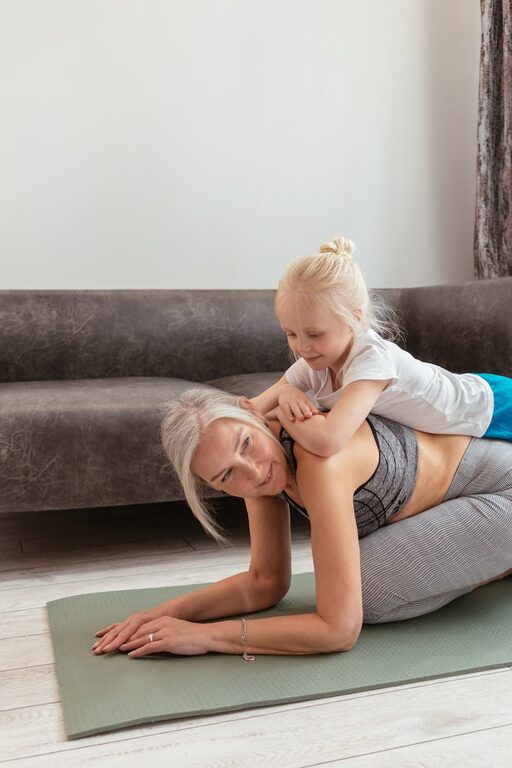Stretching is an essential part of maintaining overall health and wellness. Whether you’re looking to improve flexibility, relieve muscle tension, or simply add a few minutes of mindful movement to your day, stretching at home is a convenient and effective way to start. This beginner’s guide will walk you through the basics of stretching, the benefits, and easy routines that you can practice without any special equipment.
Why Stretching Matters
Many people associate stretching only with athletes or intensive workouts, but stretching offers benefits for everyone. Regular stretching can:
– Improve flexibility and range of motion
– Reduce muscle stiffness and soreness
– Enhance circulation and blood flow
– Promote better posture and balance
– Reduce stress and tension in the body
By incorporating stretching into your daily routine, you’re supporting your body’s ability to move freely and comfortably.
Types of Stretching
Before you begin, it’s helpful to know the two main types of stretching:
1. Static Stretching
This involves holding a stretch in one position for a period, usually 15–60 seconds. It’s great for improving flexibility and relaxing muscles, often done after exercise.
2. Dynamic Stretching
This involves moving parts of your body gradually through a range of motion without holding. Dynamic stretches are often performed as a warm-up before physical activity.
For beginners at home, static stretching is usually the safest and easiest way to get started.
Preparing for Your Stretching Routine
To get the most out of stretching and avoid injury:
– Warm up briefly: Stretching cold muscles may cause strain. Walk around or do light movement for 5 minutes before stretching.
– Wear comfortable clothing: Choose clothes that allow you to move without restriction.
– Find a quiet, open space: Ensure you have enough room to stretch fully.
– Use a mat or soft surface: This protects your joints and provides comfort.
Basic Stretching Exercises for Beginners
Here are some simple stretches that target major muscle groups. Hold each stretch gently for 20–30 seconds, breathing steadily. Never force your body into pain.
1. Neck Stretch
– Sit or stand tall.
– Slowly tilt your head toward your right shoulder without raising the shoulder.
– Hold and feel the stretch along the left side of your neck.
– Repeat on the left side.
2. Shoulder Stretch
– Bring your right arm across your chest.
– Use your left hand to gently pull the right arm closer to your chest.
– Hold and switch arms.
3. Chest Stretch
– Clasp your hands behind your back.
– Straighten your arms and lift your chest slightly.
– Feel the stretch in your chest and the front of your shoulders.
4. Cat-Cow Stretch (Spine Mobility)
– Get on all fours with hands under shoulders and knees under hips.
– Inhale, arch your back, lifting your head and tailbone (Cow pose).
– Exhale, round your back, tucking your chin and pelvis (Cat pose).
– Repeat slowly 5–10 times to loosen the spine.
5. Seated Hamstring Stretch
– Sit on the floor with your right leg extended and left leg bent inward.
– Keeping your back straight, lean forward from the hips toward your right foot.
– Hold the stretch and switch sides.
6. Quadriceps Stretch
– Stand near a wall for balance.
– Bend your right knee and grab your ankle or foot behind you.
– Pull your foot gently toward your buttocks.
– Keep knees close together and stand tall.
– Repeat on the other side.
7. Calf Stretch
– Stand facing a wall with hands placed on it.
– Step your right foot back, keeping it flat on the floor.
– Bend your left knee and lean into the wall.
– Feel the stretch in your right calf.
– Switch legs.
Tips for Effective Stretching
– Be consistent: Aim for at least 3–4 stretching sessions per week.
– Focus on breath: Breathe deeply and slowly during stretches to help relax muscles.
– Don’t bounce: Avoid rapid or jerky movements, which can cause injury.
– Listen to your body: Stretch to the point of mild tension but never pain.
– Incorporate variety: Change your routine to target different muscles.
Creating a Stretching Routine
A simple stretching routine can take as little as 10 minutes. Here’s a sample plan to try at home:
- Warm-up walk (5 minutes)
- Neck Stretch (20 seconds per side)
- Shoulder Stretch (20 seconds per side)
- Chest Stretch (30 seconds)
- Cat-Cow Spinal Stretch (8 reps)
- Seated Hamstring Stretch (30 seconds per side)
- Quadriceps Stretch (30 seconds per side)
- Calf Stretch (30 seconds per side)
Repeat this routine 3–4 times per week, and gradually increase the holding time or reps as your flexibility improves.
When to Be Cautious
Stretching is generally safe but take care if you:
– Have recent injuries or chronic pain
– Experience sharp pain or discomfort while stretching
– Are unsure about any medical conditions
In these cases, consult with a healthcare professional before starting a new stretching routine.
Conclusion
Stretching at home is an accessible way to improve flexibility, reduce muscle tension, and promote better overall health. With just a few simple exercises and a little daily practice, you can support your body’s natural movement and feel more comfortable throughout the day. Start slow, listen to your body, and enjoy the benefits of gentle stretching in your own space.
Happy stretching!

